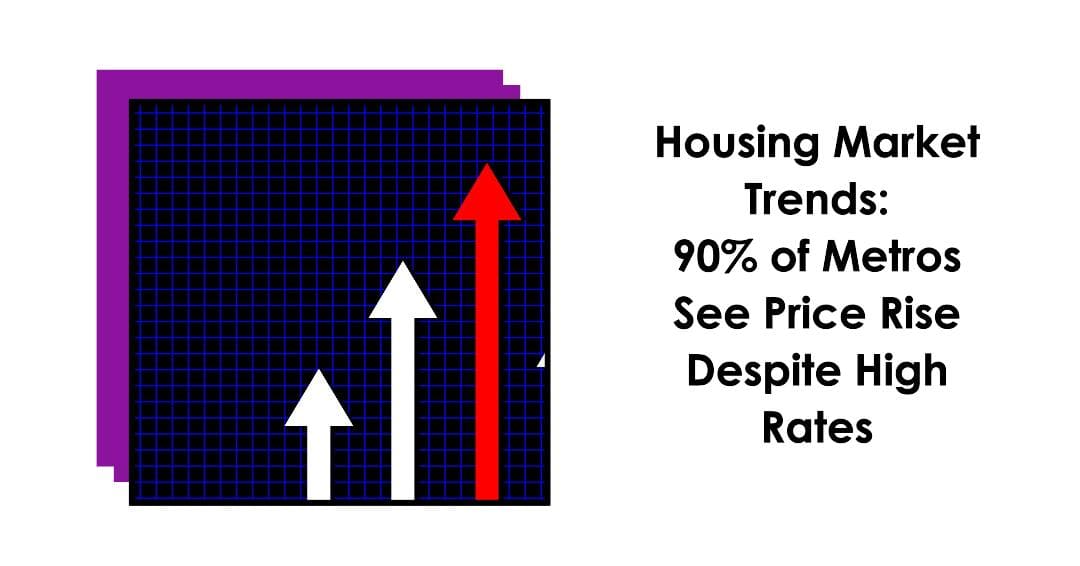The US housing market continues to defy expectations in 2024. Data from the National Association of Realtors (NAR) reveals a surprising trend: over 90% of metro areas across the country experienced rising home prices in the first quarter, despite persistently high mortgage rates that currently range between 6.6% and 7%. This upward trend is cause for both optimism and cautious analysis.
While a national rise might be anticipated, the specific locations witnessing the most dramatic increases are unexpected. Six out of the top 10 metro areas with the highest year-over-year growth are in Illinois, a state not typically associated with soaring housing prices. Fond du Lac, Wisconsin takes the crown with a remarkable 23.7% increase, followed by Kankakee, Rockford, Champaign-Urbana (all in Illinois), and Johnson City, Tennessee.
Experts like NAR Chief Economist Lawrence Yun attribute this phenomenon to a classic economic principle: “Insufficient housing supply not meeting the full demand.” Low inventory levels are creating bidding wars and driving prices up in these areas. This trend highlights a nationwide issue – a lack of new construction in many regions has created a seller's market, where buyers compete for a limited number of available homes, pushing prices ever higher.
Sure, here's a table representation of the data:
| Rank | Metro Area | Price Appreciation |
|---|---|---|
| 1. | Fond du Lac, Wis. | 23.7% |
| 2. | Kankakee, Ill. | 22.0% |
| 3. | Rockford, Ill. | 20.1% |
| 4. | Champaign-Urbana, Ill. | 20.0% |
| 5. | Johnson City, Tenn. | 19.3% |
| 6. | Racine, Wis. | 19.0% |
| 7. | Newark, N.J.-Pa. | 18.8% |
| 8. | Bloomington, Ill. | 18.5% |
| 9. | New York-Jersey City-White Plains, N.Y.-N.J. | 18.4% |
| 10. | Cumberland, Md.-W.Va. | 18.2% |
Million Dollar Dreams and Geographic Disparity:
The trend extends beyond affordability. A February 2024 report by Zillow revealed a significant increase in the number of “million-dollar cities,” where the average home value is at least $1 million. This number jumped from 491 in 2023 to 550 in 2024, indicating a growing segment of the market where luxury homes are becoming the norm.
Interestingly, California, which experienced a housing market dip in 2023, is now experiencing a strong rebound. Eight out of the top 10 most expensive housing markets are located in the Golden State, with San Jose leading the pack at a median price of $1.84 million.
Experts believe this resurgence is due to buyers viewing the previous price drops as a second-chance opportunity to enter the California market. This geographic disparity highlights the uneven recovery across the US housing market. While some regions are experiencing explosive growth, others may see more modest increases or even stagnation.
A Look Ahead: Balancing Forces and Long-Term Considerations
The future trajectory of the US housing market remains to be seen. While high demand continues to push prices upwards, rising mortgage rates could eventually dampen buyer enthusiasm. Additionally, the uneven geographic distribution of price increases widens the affordability gap in certain regions.
It will be interesting to see how these opposing forces play out in the coming months. Will rising rates cool the market, or will the supply shortage continue to propel prices forward? Only time will tell how this dynamic market unfolds.
Looking beyond the immediate future, some analysts caution that the current market conditions bear similarities to the housing bubble that burst in 2008. Stricter lending regulations put in place after the crisis have helped prevent a similar scenario, but affordability concerns are rising, particularly for first-time homebuyers.
Whether the market can sustain its current pace of growth or will experience a correction remains to be seen. Close monitoring of economic indicators, mortgage rates, and new construction data will be crucial in understanding the long-term health of the US housing market.




